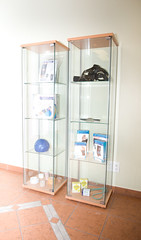Soap manufacture is one of the oldest industries dating as far back as 2800 Bc in among the aged Babylonians where a soap-like substance was found among the ruins. The Romans, on the other hand, were the ones who popularized bathing, and as a result, the use of soap for personal hygiene. The earliest soaps were made from a blend of tallow, or animal fat, and wooden ashes.

Today, however, soap is made from a blend of oil (vegetable, animal, and glycerol), lye, and water. If you want to have a perfumed soap, you just add a inescapable estimate of critical oil of your choice. You can also vary the color, texture and other properties of the soap according to the ratio of the ingredients.
Vegetable Glycerin Uses
Glycerol is produced as a effect of the saponification and transesterification processes. The largest producer of glycerol is the biodiesel manufacturing industry. Glycerol is also known by its alternative names, glycerine and glycerin. It is an cheap resource which you can make use as a means to start up your very own soap manufacture business; not only that, you can also contribute to the zero waste objective of the biodiesel industry.
Soap manufacture is easy but not that easy. There are still things to keep in mind if you want to furnish the best glycerine soap.
The first step is to purify glycerine. One way to do this is to filter glycerine; you can also heat and melt it to strain impurities. Raw glycerin may comprise residual methanol and by heating the solution, you can also retrieve the methanol by setting up a straightforward condensing unit to trap the methanol and reuse it.
The ratio of the ingredients is dependent on your discretion but a 250 mL lye to 1000 mL of water ratio produces soap with good cleansing and lathering abilities. Looking the ideal method for your soap can be a slightly tricky affair since its end properties largely depend on the glycerin to lye ratio.
Mix the heated solution for 10 to 15 minutes with constant temperature. Remember that the trick to advent up with a great glycerine soap is to keep the temperature low and constant. A mushy or beaded look will effect if the heat is a minuscule too much.
Here is one thing you have to keep in mind: always add lye to water and never the other way around. Adding water to lye triggers a dangerous chemical reaction. So always add lye to water.
If you want to add fragrances and colors, you can do so after adding lye into the mixture. Just stir your adored fragrance and color, then pour into molds and cool. Plastic packaging are the best choice for molds. You can also use packaging with a large bottom area exterior if you are planning on manufacture bars which you can cut up after cooling.
You should not cover the box completely; leave a small occasion for the soap to breathe. You should also allow the soap to cure for a duration of four to seven days before using.
Glycerol is unquestionably a very beneficial substance. As a matter of fact, its significance is not only minuscule to its use in soap making. After full, purification processes to get rid of unwanted residual impurities such as methanol, glycerol in its pure form is used in many applications such as solvent, sweetener, antifreeze agent, moisturizing agent, emulsifier, and stabilizer among other countless uses.
Enjoy your soap manufacture experience, exquisite it and you can turn it into a home company that can help you earn extra income. Make your gift to a greener planet by manufacture biodiesel yield a zero waste industry.
Soap production - Instructions and Tips on How to Make Soap From Glycerol"Good Health = Victory Healthy" Green Smoothie recipes for you Health การปฐมพยาบาลเบื้องต้น

No comments:
Post a Comment